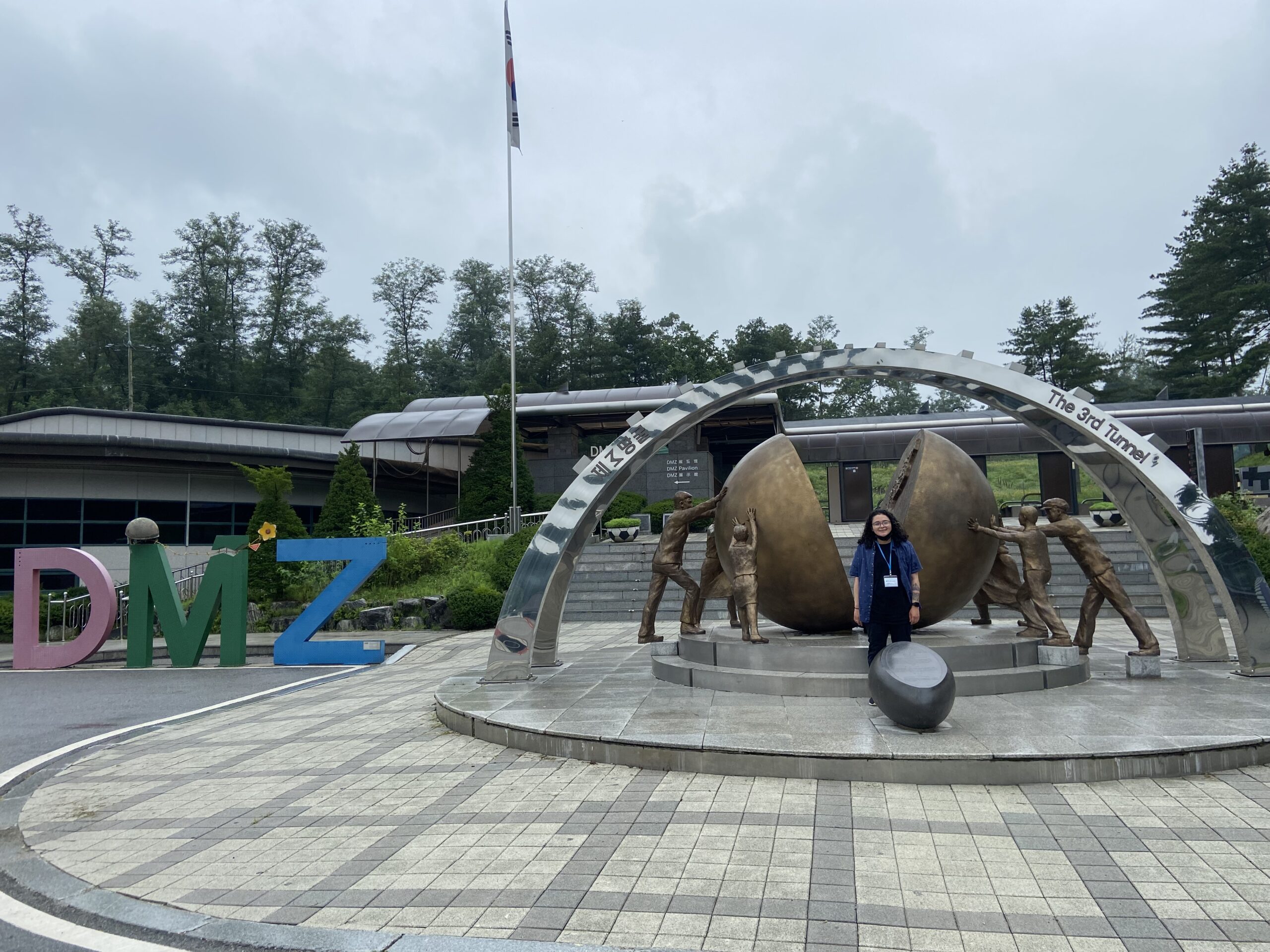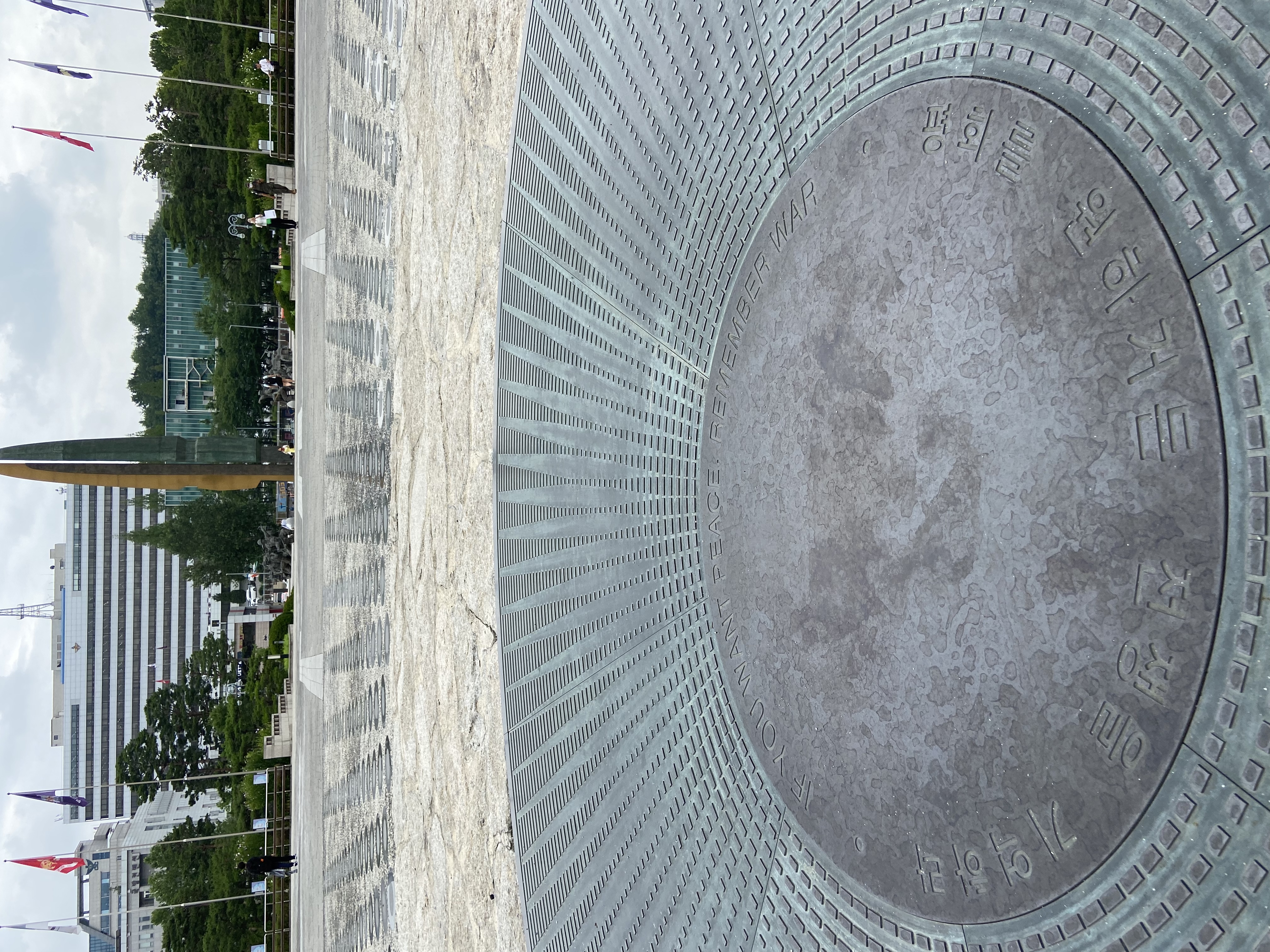
DMZ and War Memorial Tour
Countries
Regions
Recently, I had the opportunity to visit the demilitarized zone (DMZ) separating North and South Korea. Before coming to South Korea, I was aware of the tensions between both Koreas. I always knew they were in conflict, but I never knew how it came about or where it stemmed from. During my tour, I learned a lot of the history to the conflict and about many important events that changed the trajectory of the conflict.
We started our tour by crossing the “cow bridge” which was built by the founder of Hyundai Motor Company. It was interesting to learn that Chung Ju Yung was originally from North Korea and escaped to South Korea by stealing a cow from his family and selling it in order to fund his trip. After establishing a successful company, Chung Ju Yung, rebuilt a bridge within the demilitarized zone that had been damaged during the conflict. According to our tour guide, this bridge is known as the “cow bridge” because when it was rebuilt, Chung Ju Yung crossed over to North Korea and took along with him one-thousand and one cows in order to amend his transgression of stealing a cow from his family when he left home for South Korea.
Another stop on our tour was at the Third Tunnel of Aggression. During the height of the conflict, North Korea built secret underground tunnels leading to South Korea. The most interesting thing about this particular tunnel is that it wasn’t found by South Korea. It’s existence only came to light after a defector from North Korea disclosed it to South Korean authorities. Our group and tour guide were able to walk down the tunnel and see for ourselves just how long it was. We had to wear helmets because some parts were really low, so we had to crouch down so as to not hit our heads. The incline was steeper than what I had imagined so walking the length of the tunnel back up was a bit difficult. While I was struggling to walk back up the steep tunnel, it helped put into perspective the amount of work it must’ve taken to build the tunnel in the first place. Our tour guide explained to us that in order to create the tunnel, workers had to use dynamite to blow up the hard rock underground. Again, this would not have been an easy job for anyone. This particular tunnel is only one of four tunnels that have been discovered by South Korea throughout the years.
After leaving the tunnel, we visited the Odusan Unification Observatory where we used binoculars to see across the river into North Korea. Even though it may not seem like a big deal, I was able to see three small figures walking. I was able to see with my own eyes (through binoculars) people in North Korea. After the observatory, we headed to the War Memorial of Korea museum. It was a somber experience as we got to see how the conflict impacted the lives of ordinary citizens. We also saw the destruction and pain caused by the conflict. Overall, I’m glad I was able to participate on this tour as it helped me gain a newfound understanding of both the history to the conflict and why there are still tensions between North and South Korea.
Picture 1: Picture of me in front of the 3rd tunnel sculpture
Picture 2: Emblem at the War Memorial of Korea that reads “If you want peace, remember war”

